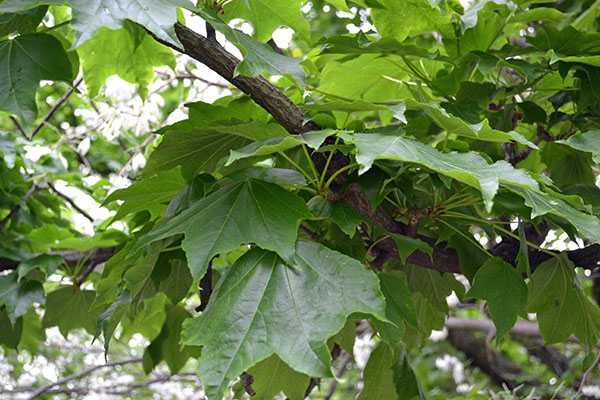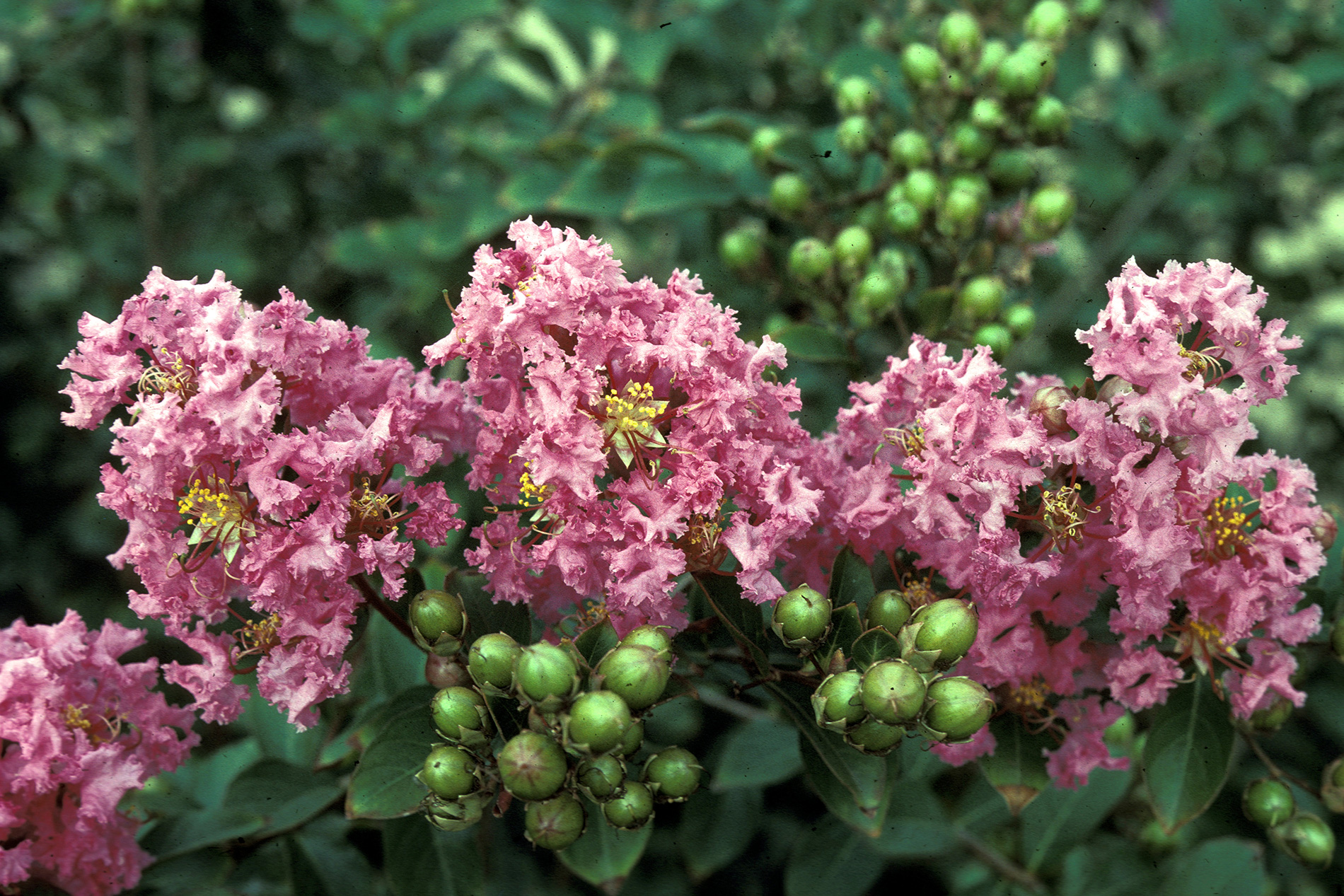Kalopanax pictus
Castor-Aralia
China, Korea, Japan, Sakhalin, the Russian Far East
Upright oval shape.
Full sun. Prefers moist soil.
Makes an excellent shade tree with a tropical look thanks to its large leaves. It is still relatively uncommon in commerce. It grows 40-60 feet tall with an oval rounded outline at maturity. The bark is armed with stout, broad based, yellow prickles when young and mature truncks are black and ridged and furrowed. The leaves are alternate and palmately 5-7 lobed, growing 10 to 14 inch wide on young trees. Petioles often longer than the blade. Flowers emerge in July and August in a flat, terminal umbellose panicle, 12 to 24 inches across. Bees love the flowers. Fruit is produced in late September and October and devoured by birds. Relatively trouble free plant. No known serious diseases or pests.
Dark green above, lighter green below in summer. Alternate, simple, 7 to 14 inches wide, triangular ovate shape, long pointed uniformly toothed margin.
Trunk is brown-black with ridge-and-furrow bark. Stems have many yellow prickles.
White flowers from July to early August. Produce in numerous umbels. Bees love the flower.
Small fruit, .125 inch wide, black globose drupe. Late to September to October. Very attractive to birds.
Seed.






